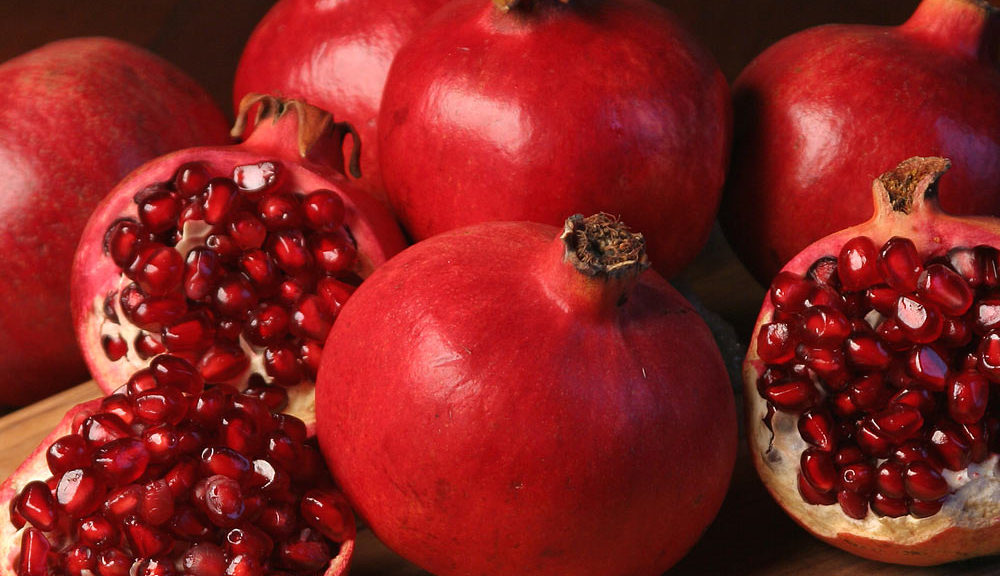People are always looking for “the next new thing.” When it comes to food, “the next new thing” is often something very old that has been rediscovered. Consider the pomegranate. This ancient fruit has recently become a culinary media darling. Not only the fruit itself, but pomegranate juices, teas and concentrates have taken the market by storm. One recent start-up company even makes pomegranate-flavored ice cream.
Pomegranates have been cultivated in the Middle East for millennia. They are mentioned in Greek myths, the Bible and the Koran. In many cultures they are considered a symbol of abundance and fertility. In Greece and Turkey, it is traditional to break a pomegranate on the ground for good luck at weddings, on New Years, and when one buys a new house. Despite all this history and tradition, pomegranates are not exactly a household item in this country. Few people go to the store with “half a dozen pomegranates” on their shopping list. Nevertheless, pomegranates are popping up in an increasing number of recipes, especially as an ingredient in autumn and winter salads. And pomegranate juice has become so popular that there are supply shortages because bottlers can’t keep up with demand.
For the uninitiated, the pomegranate is an improbable fruit. It resembles a lumpy softball with a leathery red skin. Cutting it open reveals packed clusters of juicy red-wine colored seeds, surrounded by a soft, fleshy pith. The first time I opened one, I wondered to myself “which part do you eat?” I was a little surprised to learn that you eat the seeds, and discard everything else. Pomegranate seeds are, well, seedy, but not in a bad way. They are soft and bursting with flavor that ranges from tart and astringent to quite sweet. The tannins in the fruit impart great depth to its flavor, and a few seeds scattered in a salad contribute an extraordinary amount of character for their small size.
For those who don’t like seeds, there is pomegranate juice. Pomegranate juice is a delicious beverage with a rich red wine color and sweet, complex taste. In addition to tasting great, it has an extensive resume of health benefits. There is research showing that pomegranate juice slows or prevents certain cancers, prevents plaque build-up in the arteries, improves blood flow to the heart, and slows the onset of osteoarthritis and Alzheimer’s disease. Pomegranates are in peak supply from October through mid-December. When shopping, seek out fresh-looking fruit that is heavy for its size. Pomegranates will keep for up to a week at room temperature, and up to a month in the refrigerator.
Here is a recipe for a fall salad featuring pomegranate and toasted hazelnuts.
Pomegranate and Toasted Hazelnut Salad
1 cup hazelnuts
1 large pomegranate
6 generous handfuls of mixed baby greens or arugula, washed and dried
1/2 tablespoon red wine vinegar
2 tablespoon aged balsamic vinegar
6 tablespoons extra virgin olive oil
Salt and pepperPreheat oven to 400 degrees. Spread hazelnuts on a baking sheet and toast until golden, 12 to 15 minutes. Allow to cool, then rub them between your hands to remove most of the skins, and chop them coarsely. Cut the pomegranate in half horizontally and smash on a plate, cut side down. Most of he seeds will fall out. Remove the remaining ones with a spoon. Put the salad greens in a large bowl. Add the vinegars, olive oil, and salt and pepper to taste. Toss to coat the leaves evenly. Add toasted hazelnuts and pomegranate seeds, toss again, and serve. Serves 6.
Recipe from Chez Panisse Fruit by Alice Waters


